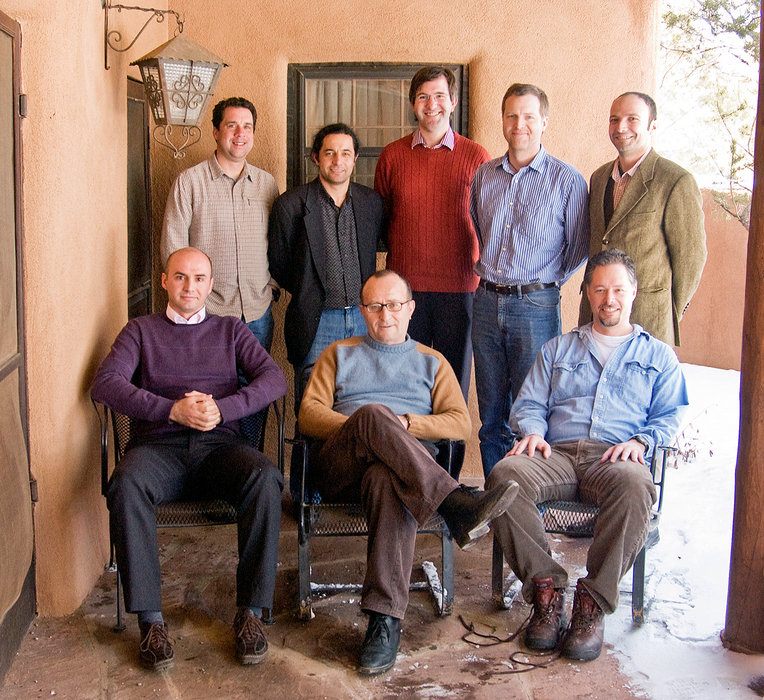
The Shala Valley Project, Northern Albania: Collaborative, Interdisciplinary Approaches to Cultural Isolation and Interaction
Chaired by Michael L. Galaty
February 24–25, 2010
The Shala Valley Project, Northern Albania: Collaborative, Interdisciplinary Approaches to Cultural Isolation and Interaction
The Shala Valley Project (SVP) is an Albanian-American collaboration with major funding from the National Science Foundation and the National Endowment for the Humanities. The focus of the interdisciplinary study, which integrates archaeological survey and excavation with geoscientific, ethnographic, and ethnohistorical surveys, is the Shala fis (“tribe”), one of many northern Albanian fisi that have survived intact to the present day. In particular, the project examines the effects of relative cultural isolation on people who have always lived in a frontier zone at the edges of larger polities such as the Ottoman Empire and the Albanian nation-state.
Recent archaeological discoveries in the Shala Valley, combined with oral histories and family genealogies, suggest that the ancestors of the valley’s modern inhabitants arrived in the fifteenth century, fleeing forced conversion by the Ottomans. They probably infiltrated a sparsely settled landscape and quickly spread north toward Theth, sometimes occupying residential terraces vacated in the Iron Age. It was during the following centuries that Shala’s “tribal” sociopolitical system developed.
“The SVP’s central research question is one of general anthropological importance,” said seminar chair Michael Galaty. “Anthropologists have long acknowledged the impact of various forms of cultural contact on trajectories of culture change.” Interpretations of this process have ranged from the traditional view that periods of cultural isolation were punctuated by periods of interaction leading to change—a view that was eventually called into question—to the idea that in most isolated cultures, change was internally motivated. Later approaches speculated that the formation of tribal organizations was stimulated by contacts between societies of unequal complexity. More recently, many scholars have employed a world-systems framework suggesting that “core” states sought to incorporate “peripheral” societies, a model amended to describe situations in which those living on the periphery are able to dictate the conditions of their own incorporation, a model known as “negotiated peripherality.”
“Our research in Shala is a unique opportunity to test the hypothetical implications of many theories,” said Galaty. “The mountains of northern Albania were in modern times a frontier zone wedged between competing state powers. We have collected data spanning five centuries that allow us to understand the effects of both isolation and interaction on a tribal culture, one that persisted despite, or perhaps in response to, the real possibility of forcible incorporation. Studying how isolation was maintained and how interaction took place in Shala should allow us to generate correctives to current anthropological theoretical models of culture contact and change and compare the situation in northern Albania with other archaeological and historical models, to the benefit of all concerned.”
The short seminar at SAR came at an especially fortunate time for the SVP project, just after it had received funding from the Archaeological Data Service, out of York, UK, to permanently archive all its data, photographs, drawings, and audio and GIS files. All project members and the public now have full access to the data.
Michael L. Galaty, Chair
Professor, Department of Sociology and Anthropology, Millsaps College
Christopher Fisher
Associate Professor, Department of Anthropology, Colorado State University
Ols Lafe
Director, Directorate of National Heritage, Ministry of Tourism, Culture, Youth and Sports Rruga e Kavajës, 1000 Tirana, ALBANIA
Wayne Lee
Associate Professor, History Department, University of North Carolina
Mentor Mustafa
Ph.D. Candidate, Anthropology Department, Boston University
Synchronic diachronism(s) and diachronic syncretism(s): Marriage and feuding relations and the social-political organization of authority in Shala Valley
Robert Schon
Assistant Professor, School of Anthropology, University of Arizona
Report of the Extensive Archaeological Survey Team
Zamir Tafilica
Director, Historical Museum of Shkodra, Shkodra, ALBANIA
Symbols of the Shala Dwelling
Charles Watkinson
Director, Purdue University Press, Purdue University
Settlement and Economy
Generous funding provided by the National Science Foundation
